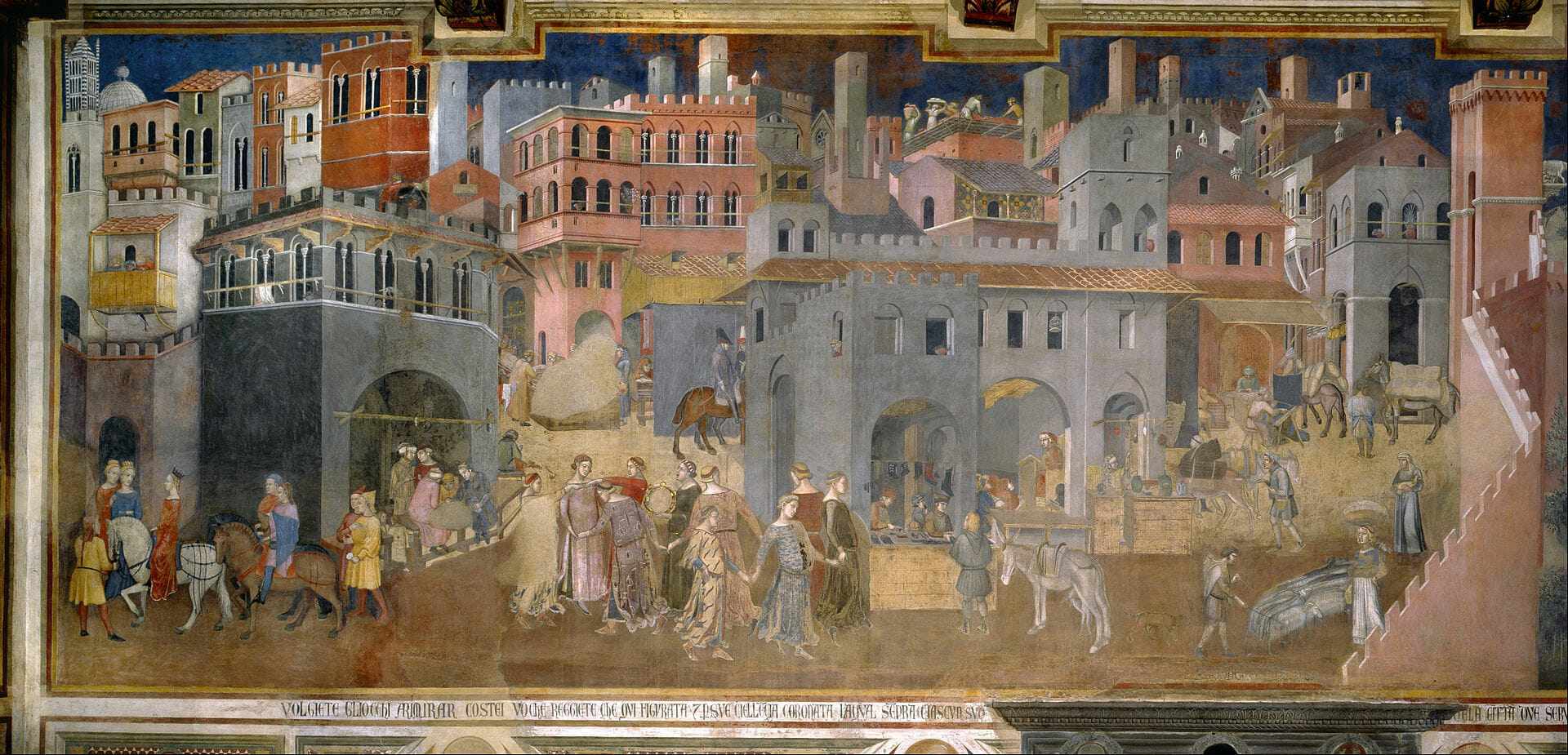
Sano di Pietro's Nativity of the Virgin | The Mary's first day
Artist
Year
Country
Format
Material
The Nativity of the Virgin in Palazzo Corboli in Asciano is a masterpiece from the early 1400s. This work was attributed to the mysterious Master of the Osservanza Triptych. In 2011, the art historian Maria Falcone identified the work of the anonymous painter as being part of the famous Sano di Pietro’s youthful activity, a Sienese painter of extraordinary skill. The identification of the Maestro dell’Osservanza was possible thanks to discovering a document related to this Nativity, which makes this work the key to solving an enigma that has preoccupied many scholars.

Sunset in Siena
The polyptych represents a cross-section of daily life in the 1430s. Sano di Pietro’s The Nativity of the Virgin takes place inside a house composed of two rooms and a porticoed courtyard. On the right, in an ample space of the table dedicated to the female universe, St. Anne is caught lying in bed just after giving birth to her daughter Mary. A maid is pouring water from a jug to allow the new mother to wash her hands. Other women in the room have finished giving the newborn baby its first bath, and while one of them cradles the little one. The other one warms a cloth for her by the fireplace. In the back, another woman enters the scene with soup in one hand and roast chicken in the other.
The male universe is waiting for news in the next room, relegated to a narrow corner. In the background stands the golden backdrop, a legacy of medieval tradition that gives preciousness and sacredness to the scene. This element is not unreal because it imitates the natural light that the sky takes on at sunset. This way, it seems that Sano di Pietro wanted to satisfy a client’s request with conservative tastes, with that desire to imitate nature typical of the new Renaissance language.
The first day of Holy Mary’s life
The adherence to the realities of daily life are elements that liken the work to a documentary narrative product. One figure is the one that confirms this juxtaposition: the woman on the right sitting on the chest at the foot of the bed. The woman is dressed in rich clothing and is not part of the line-up of Saint Anne’s servants.

Many scholars have likened her figure to that of a comic leader in the Commedia dell’Arte, with the role of declaiming the prologue and introducing the scene and actors. In classical tragedies, the chorus covered this role, a real character who often acts as a bridge between the audience and the actors, introducing dialogue with both. In the case of both the chorus and the lead actor, the spectator has the opportunity to trace the voice of the narrator, who explains and guides the observation.
In Sano di Pietro’s Nativity of the Virgin, the woman is posed, with a hand over her heart, having just introduced the scene. Seated by a side screen, she turns her eyes towards the room, guiding the viewer in her observation and suggesting where to rest her gaze. She is the only character aware that she is in a narrative, thus breaking the fourth wall, acting as a bridge between us and the scene. If the work were a documentary, she would represent the narrator’s voice.
Tag
Buy a ☕ for Hypercritic









